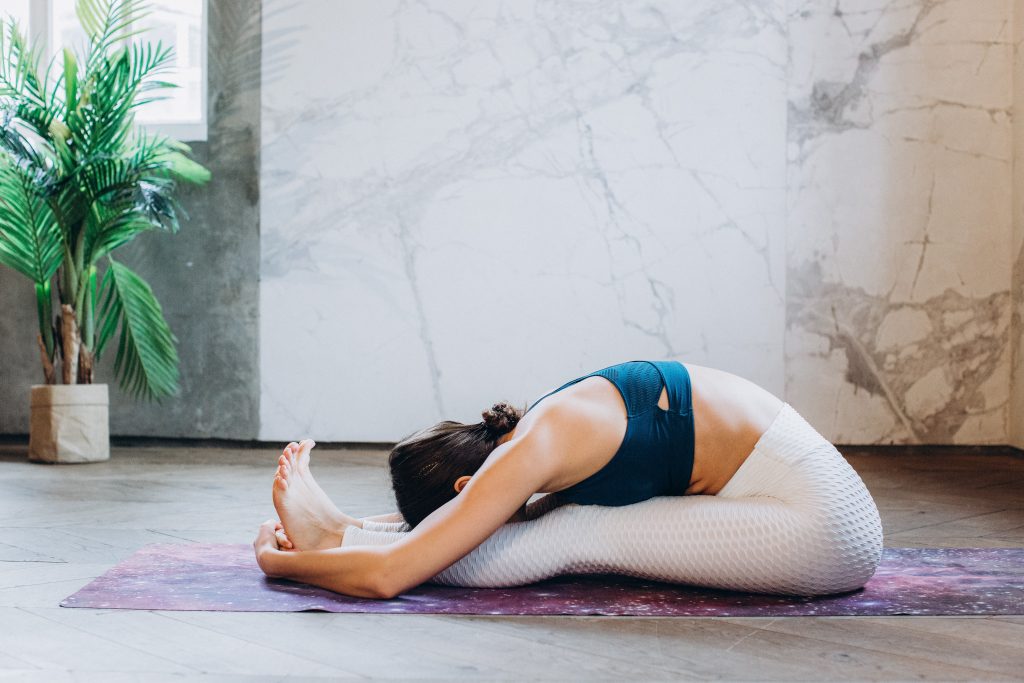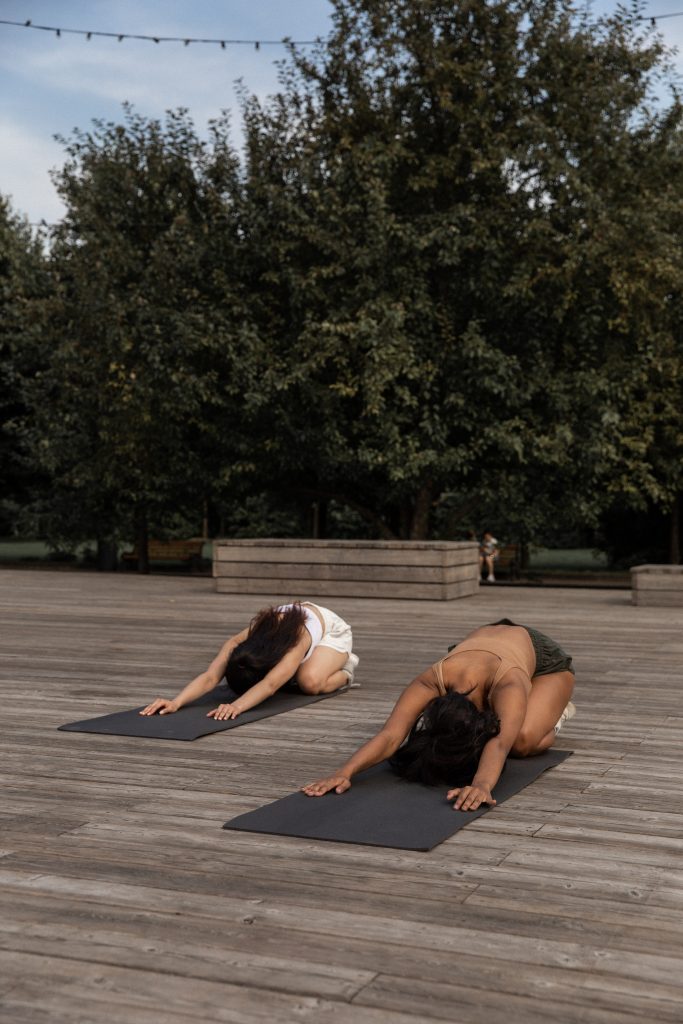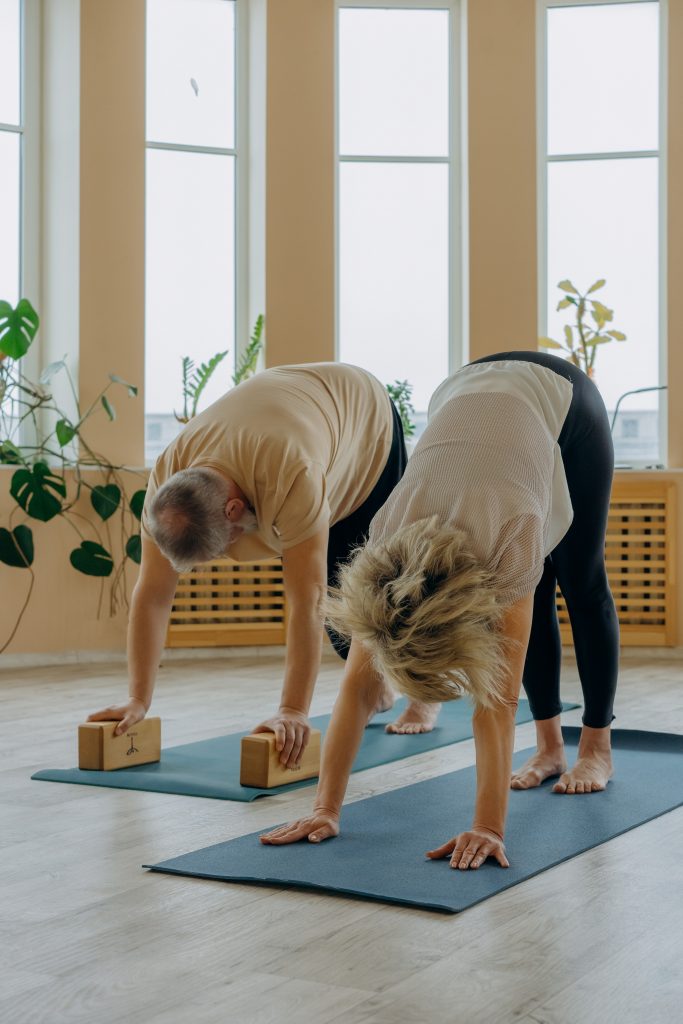Yoga Poses For Deep Fascia Stretching

Myofascial pain is very common and you’ve likely either experienced it before, or are currently in pain because of it.
Let’s Break Down The Term “Myofascial”
Myofascial refers to pain in your muscles and fascia – with “myo” referring to muscle and “fascial” referring to fascia.
Fascia is a thin layer of elastic connective tissue that holds everything in your body in place, including your muscles. It has a lot of nerve endings making it highly sensitive and susceptible to experiencing pain. Fascia engulfed the muscle groups, but there is also a fine webbing of fascia that connects the skin to the fat, muscle and other connective tissue on the way to the core of the body. Fascia comprises white blood cells (immune system), fibroblasts and myofibroblasts along with some adiopocytes (fat). Some authors write of four types of fascia; these are linking, separating, fascicular and compression. Together, this is a highly functional, 3-dimensional matrix.
Perhaps the most important and least discussed part of fascia is the extracellular matrix (ECM). This is part liquid and part fiber. The cells of the fascia control the composition, function and viability of this matrix. Chronic inflammation, oxidative stress and advanced glycation end products all damage the ECM and fascia cannot work well. Also, in addition to the cells above there are newly discovered telocytes that are responsible for sensing mechanical change; these are vital to communication between cells. There are also fasciacytes and these make hyaluron. The sliding action of fascia and other connective tissues require this substance.

Myofascial pain is often associated with trigger points, commonly referred to as ‘knots’, in different areas of the body. If you’re experiencing back pain and get a massage, they’ll likely massage and stretch out the knots that are causing you pain. Trigger points are essentially small areas of muscle that are either hypercontractile, or have become fibrotic. By their nature, they cause dysfunction of the surrounding muscle groups and of course, the fascia.
Myofascial pain can come from injury, overuse, and even underuse! Most myofascial pain is associated with poor posture and elevated cortisol levels. More often than not it is related to stress, chronic inflammation or elevated levels of oxidative stress within the body. You’ll want to make sure you’re actively stretching and engaging your muscles and fascia on a regular basis to avoid these painful spots. Likewise, a healthy anti-inflammatory diet, good sleep and reduction of stress will dramatically reduce myofascial pain. Believe it or not, following a good circadian rhythm will do wonders for pain associated with fascia.
Yoga For Pain Relief
If you’re experiencing myofascial tightness or pain in your back or other areas of your body – yoga is a great solution.
It’s best to participate in yoga with an experienced yogi who can guide you through poses and give you feedback in the moment. Tactile feedback is immensely helpful and someone who is able to visualize what is incorrect in your posture is also helpful. More importantly, having someone there to suggest the right adjustments and provide feedback is the best situation. The brain’s plasticity for learning and mastering movements is highly dependent upon feedback, tactile and biofeedback are two important types. However, there are simple poses you can try at home and by watching instructional videos from professionals. Just be mindful that if the positions are not completed correctly, the outcomes might not be optimized. It is important to do what is within your ability and gradually improve over time. No one was able to do everything your yogi does immediately.

One yoga pose that’s great for reducing tension and strengthening the back is child’s pose.
For this pose, you’ll want to sit back on your heels with your knees together touching the ground. This is a variation of kneeling. You begin in the kneeling position but then fold the body forward so that the hands touch the ground too. Then drop the buttocks to the heels by flexing the knees. From there, bend forward, stretching your arms out in front of you, shoulder-width apart.
You’ll want to rest your forehead on the floor and let the weight of your upper body and back rest against your legs. Feel the spine stretch as you do this. Then gently move your torso from right to left and feel each side of the spine stretch a bit with that movement. Some folks cannot do this pose right away. A variation is to spread the knees apart a bit and allow the stomach to drop between. This allows for a better stretch to the spine if your motion-inhibited in the knee and hip area.

Another popular pose (for good reason!) is downward-facing dog.
This pose helps with pain in your back and sciatica. To execute this pose, you’ll want to start on the ground on all fours. You’ll place your hands shoulder-width apart, with your knees below your hips. Push off of your knees with your hands and toes, maintaining a slight bend in your knees. Placing your feet wide apart helps with this if you are very stiff.
The goal is to keep the heels on the ground as the arms reach forward with palms on the ground. An ideal down dog position will have a very flat back with a full spinal stretch. It is important to do this the right way and we encourage you to go to a good restorative yoga class.
Schedule A Consultation Today
Dr. Warner is an advocate for applying yoga to treatment plans. At Warner Orthopedics and Wellness, yoga is yet another great way to stretch and strengthen your body while reducing pain naturally. Call to schedule your appointment today, so you can find a treatment plan tailored to your needs.





